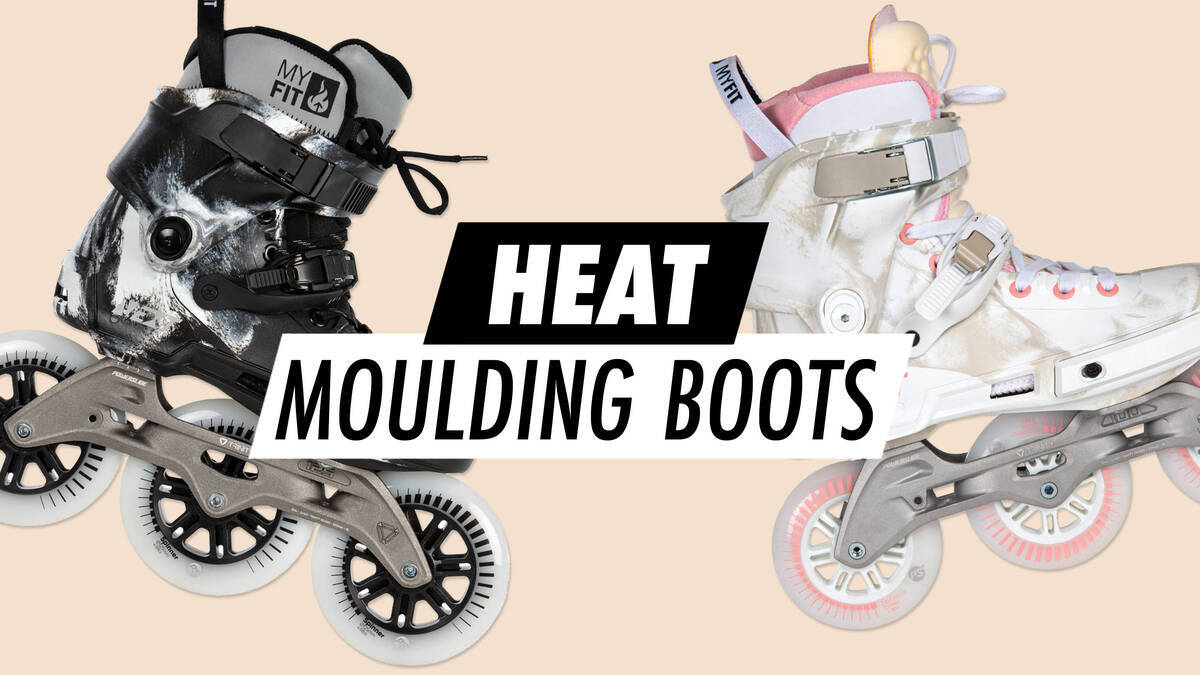How to Heat Mould Powerslide Boots


Thermo Forming of Boots

SHMR-Technology
Also identified as Super Heat Mouldable Resin, SHMR is incorporated in contemporary racing shoes. Unlike traditional boots relying on thermo sheets, the shell construction is entirely different. A heat mouldable epoxy is utilized, intertwining various layers of carbon fibre. Racing shoes that include SHMR-Technology can be heat moulded at any point within the shell, due to the pervasive application of epoxy throughout the shell and between each carbon fibre layer. This epoxy can be repeatedly heat moulded without diminishing its efficacy. The moulding temperature for race shoes using SHMR-Technology is relatively low, around 80-90 degrees Celsius. An additional benefit of SHMR-Technology is a minor decrease in shell weight.
Shoes featuring SHMR Technology include:
- Powerslide: Double X, Vision, Vision Junior, Infinity, C8, PH9
- Core Racing: Vi-Pro, Icon, Triple X2
Thermo Sheets
This "old school" method continues to be prevalent in many heat mouldable speed boots. Thermo sheets are slender layers of heat mouldable composites that are inserted between the shell's carbon layers. Typically, these sheets are used around the boot's ankle area. Moulding can occur solely in areas equipped with thermo sheets, as carbon fibre itself cannot be heat moulded.
Drawbacks of thermo sheets: Repeated heating leads to brittleness and restricts the moulding process. Thermo sheets are entirely absent in Powerslide or Core Racing shoes.
What is the procedure for heat moulding skates?
Thanks to our advanced SHMR technology, also known as Super Heat Moulding Technology, the full collection of Powerslide and Core Racing carbon boots is designed for heat moulding.
Follow these instructions to achieve the optimal result.
Use an oven or heat gun for moulding your boots.
Important Notice! Heat moulding can be done on any segment of the shell. It's advisable to keep the frame attached to the boots and perform fitting while seated. Avoid applying full weight on the skates during the heat moulding process!
- Remove wheels and loosen the laces and buckles
- Preheat the oven to 80 °C - 90 °C
- Position the boot in the centre of the oven
- Keep the boot in the oven for approximately 10-15 minutes until the shell near the cuff becomes pliable
Warning: Do not place your foot in a hot boot to avoid burns!
Metal buckles or eyelets may also burn your fingers!
- Allow the boot to cool slightly and check its temperature with your finger prior to stepping in
- Fasten the laces and buckles securely
- Ensure your leg is in the proper skating position
- Let the boot cool down
- If any discomfort occurs, use the plastic end of a screwdriver to reshape the offending section
- Repeat this process with the other boot
Should your initial results be unsatisfactory, you can heat mould the boots as often as needed.
Warning: When employing a heat gun, maintain a safe distance of approximately 20 cm from the upper leather to prevent scorching the material.
Which types of speed boots can undergo heat moulding?
Most speed boot manufacturers offer heat mouldable models. Verify with your local dealer or the manufacturer whether "thermo sheets" or comparable technology are employed in their carbon fibre boots. Remember, carbon fibre alone does not accommodate heat moulding. The absence of this specific layer in a boot renders it unmouldable, apart from the SHMR Technology present in Powerslide and Core Racing carbon fibre models.
Is repeated heat moulding possible for my boots?
With SHMR technology, multiple attempts are allowable.
Boots constructed with thermo sheets tend to weaken with repeated moulding. We advise limiting the process to necessity. Consider custom boots if persistent fitting issues remain unresolved through heat moulding.
What explains the extended time required for Powerslide and Core Racing shoes to become pliable?
The answer lies in the epoxy's quality during shell production! Poor-quality epoxy softens at lower temperatures, simplifying and hastening the process, but this is not advantageous. At Powerslide and Core Racing, we employ only superior epoxy, requiring higher temperatures for softening, which increases moulding time.
Shoes with shells that become pliable at exceedingly low temperatures may experience unintended heat moulding simply from exposure to direct sunlight when stored in a car.
